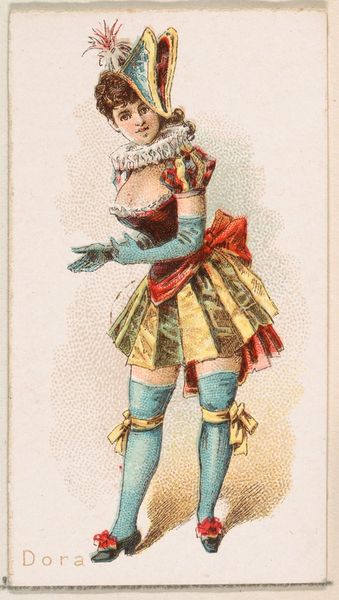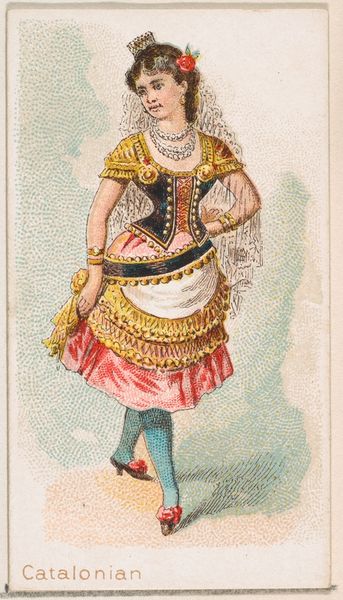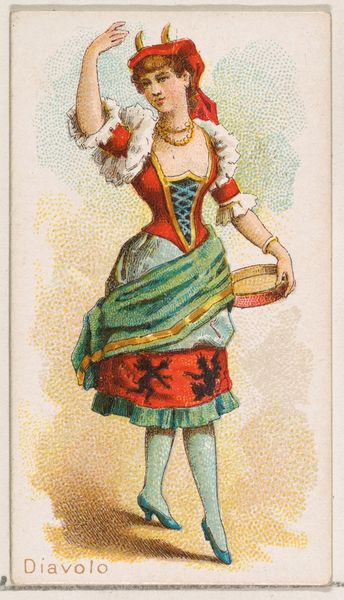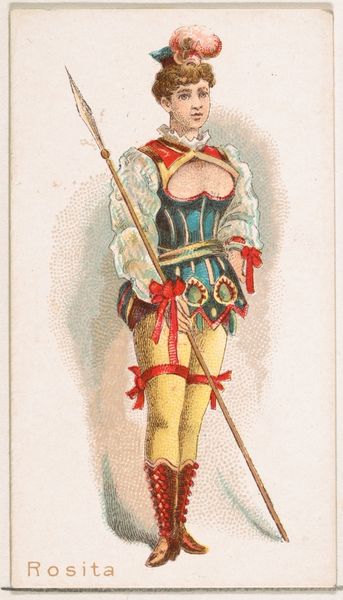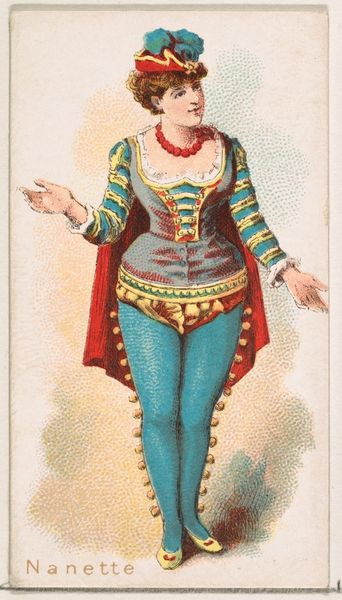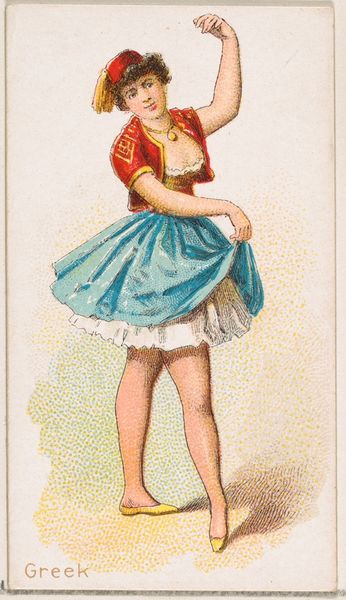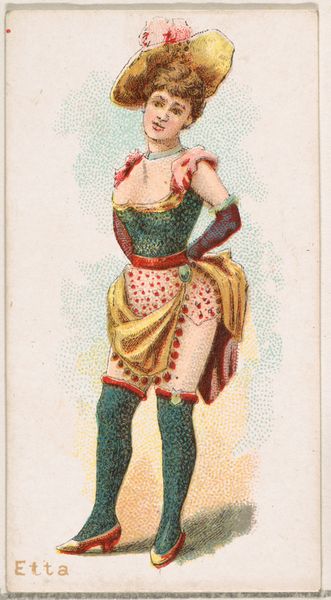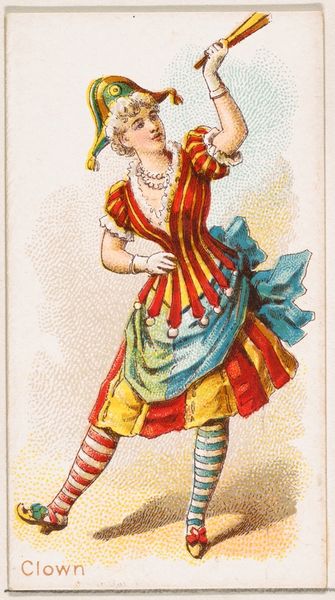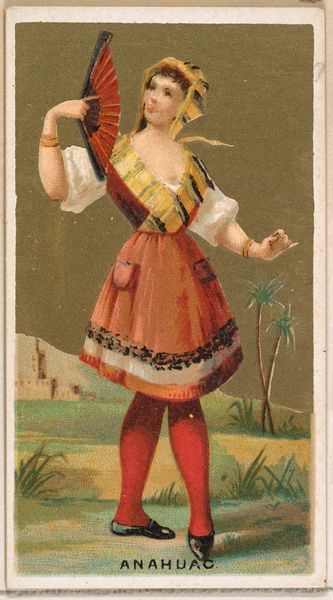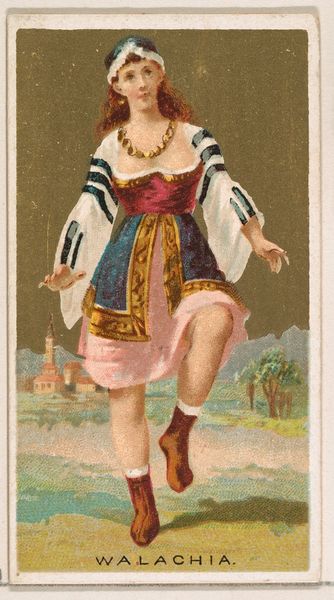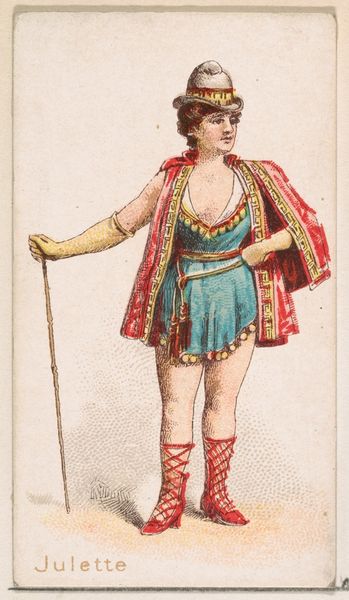
Corinne, from the Ballet Queens series (N182) issued by Wm. S. Kimball & Co. 1889
drawing, print, watercolor
portrait
gouache
drawing
water colours
impressionism
caricature
caricature
figuration
watercolor
coloured pencil
watercolor
Dimensions: Sheet: 2 3/4 × 1 1/2 in. (7 × 3.8 cm)
Copyright: Public Domain
Curator: This is "Corinne," a chromolithograph from the "Ballet Queens" series created around 1889 by William S. Kimball & Company. It’s part of the Metropolitan Museum of Art's collection. Editor: My first impression is a sense of heightened theatricality. The exaggerated proportions, the flamboyant costume… it's like a snapshot of performance and constructed identity. Curator: Exactly. Consider how the artist manipulates color and line to emphasize form. Note the sharp contrasts of red and blue, framed by the decorative gold trim that sculpt her body. This lends to a reading of overt and unapologetic ornamentation. Editor: And the context is key here. These “Ballet Queens” were disseminated as collectible trade cards alongside cigarettes. It speaks to the commercialization of female performers and the male gaze inherent in their mass consumption. The pom-poms at the bottom of her attire feels hypersexualized now, wouldn't you agree? Curator: Well, the visual language definitely presents an idealized, almost caricatured, femininity. But the point seems to be how the artist utilized visual conventions such as watercolours, coloured pencils, and print making for their marketing tools to mass-produce ephemeral images of these feminine types. The flattening effect inherent in printmaking is notable as it's so obviously not aiming for the same standards of ‘high art’. Editor: True, but that doesn't absolve it of its social function. It perpetuated certain notions of beauty, class, and access. Who were these “Ballet Queens," and what agency did they have over their image? This image could trigger vital dialogues around art, gender, and labour practices, then and now. Curator: An excellent point. There are layers upon layers to this otherwise simple image. It might seem quaint initially, but its construction and context speak to both visual language and societal frameworks. Editor: Yes, the image becomes an artifact. Something that can invite critical engagement to question, challenge, and reshape perceptions of our shared history.
Comments
No comments
Be the first to comment and join the conversation on the ultimate creative platform.
